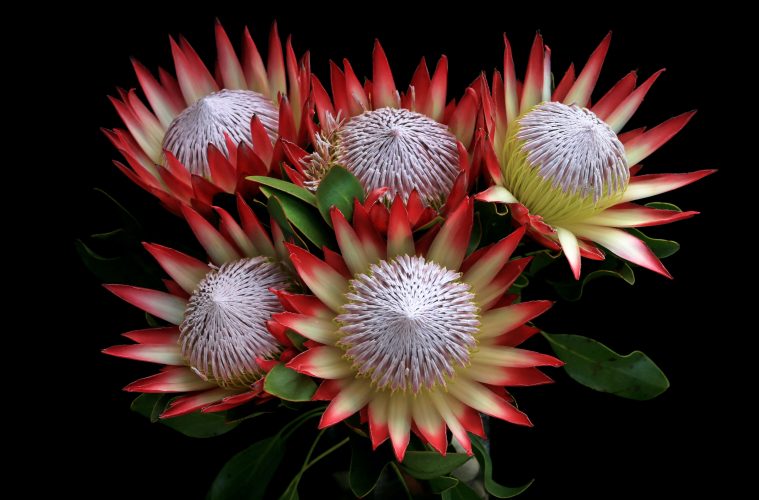The protea flower, Proteoideae, forms part of the sugar bush family – it is also South Africa’s national flower.
This beautiful treasure usually comes in soft white, pink, red and yellow hues with pointy petals and artichoke like flower heads. Majority of proteas grows in the Cape Floristic region.
It thrives in acidic dry soil and can survive extreme weather conditions such as drought. It is a wonderful low-maintenance plant that you can grow in your home garden. It also has a long vase life in flower arrangements, and makes for an excellent dried flower.
Here are some protea plant varieties for your home.
King Protea
The king protea, protea cynaroides, is known to have the largest flower head in the species. It is also known as the king sugar bush. This is the famous flower that appears on South African emblems. It has pink pointy petals and white artichoke-like spikes in the centre of the flower.
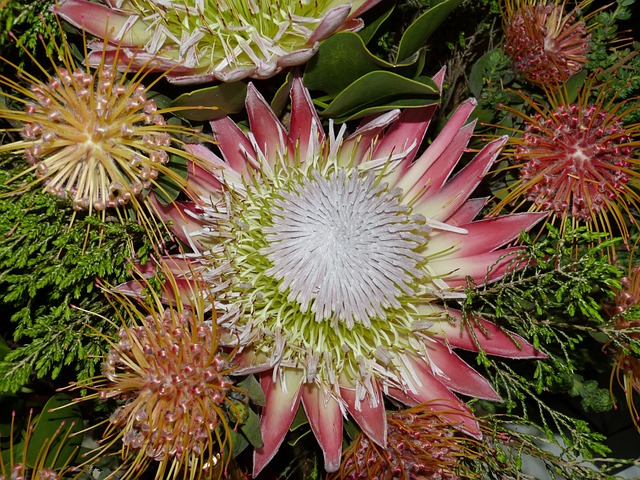
Image credit: Pixabay
Queen Protea
The queen protea, or the protea magnifica, has the second largest flower head after the king protea. It is a perfect feature plant with spectacular pink flowers and attractive soft grey foliage. Ideal for low-water use landscaping. They are great for cut flowers, fresh and dried.
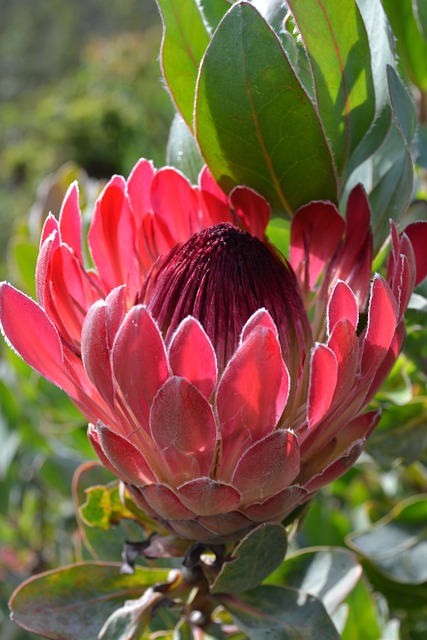
Image credit: Pixabay
Limestone Sugarbush
The limestone sugarbush, or the Protea obtusifolia, is one of the red-coloured variants of the protea flower. It is a bright and bushy addition to any garden.
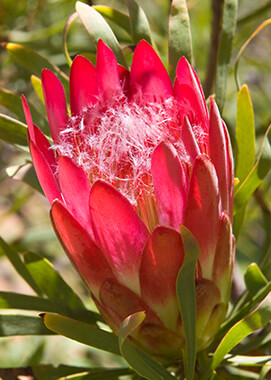
Image credit: Fynbos People Facebook Group
Madiba Protea
This protea is a variant of the king protea. It was named after Nelson Mandela, it is called Madiba protea, Nelson Mandela’s clan or family name.
Image credit: Pixabay
Duchess Protea
The duchess protea, also known as protea eximia or the broad-leaf protea, is an easy-to-grow protea. It presents its showy, deep pink, purple-centred flower heads above greyish-green foliage.
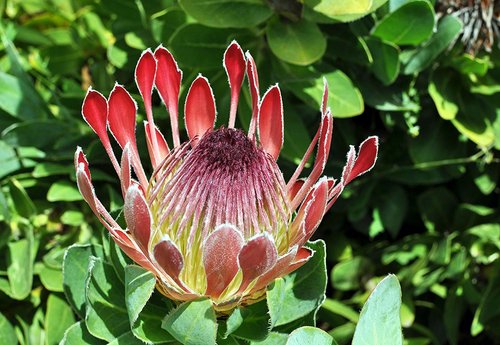
Image credit: Pixabay
Protea Cafra
Protea caffra or Protea afra is one of the smaller proteas that are generally little shrubs are usually found in open or wooded grassland, and on rocky ridges. They are often used for firewood.
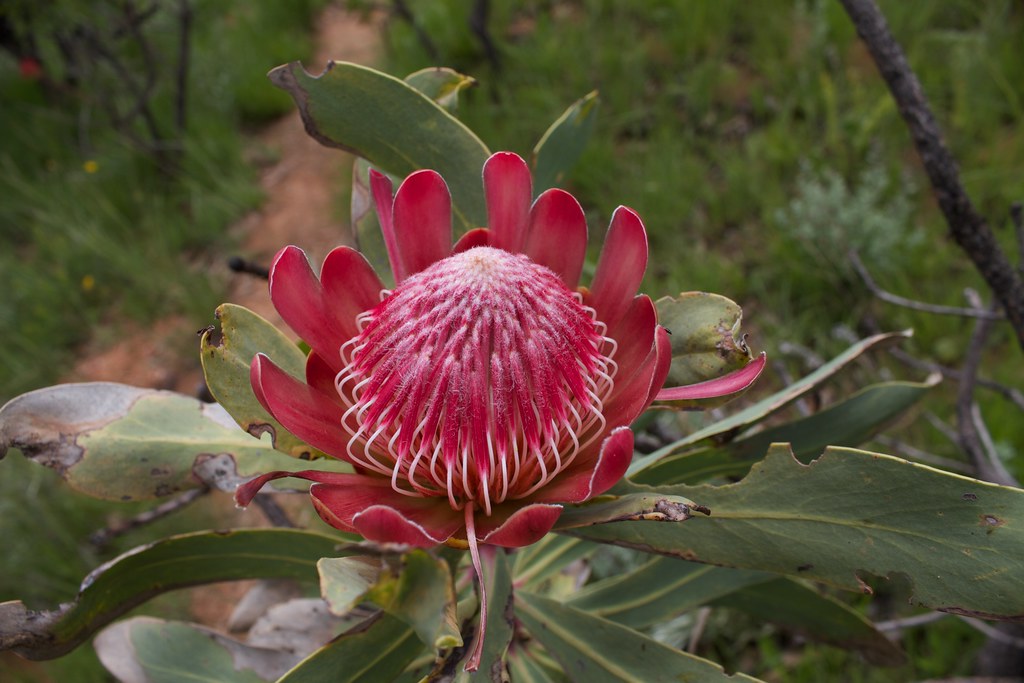
Image credit: Fynbos People Facebook Group
Protea Compacta
Protea compacta, also known as the Bot river sugar bush, is known for its vibrant white petals. Some variants have soft pink petals. Protea compacta is a single-stemmed, lanky and sparsely branched shrub which grows up to 2 – 3.5 metres tall.
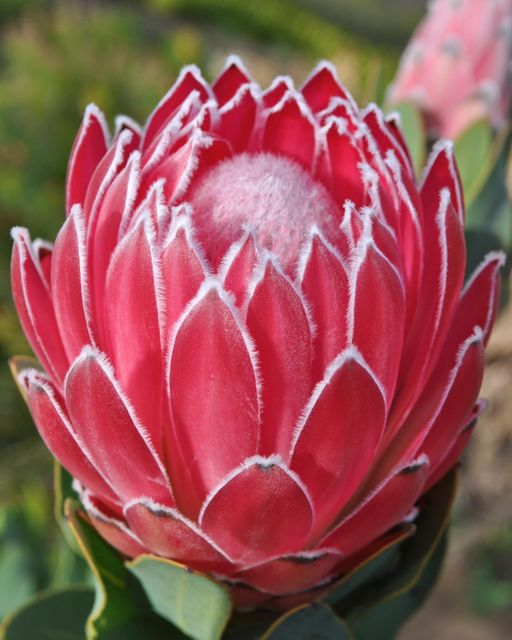
Image credit: Fynbos People / (Facebook)
Protea curvata
Protea curvata, or the Serpentine sugarbush, is a rare tree with spectacular, deep pink bracts and pale pink flowers in winter, that has potential as a garden ornamental for summer rainfall gardens. This protea is endemic to the Mpumalanga region and is protected there.
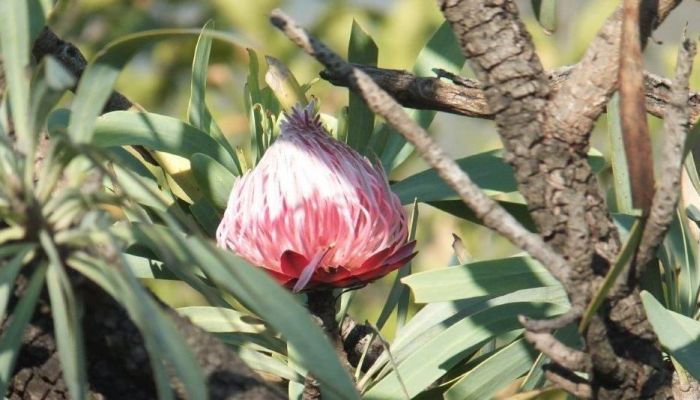
Image credit: Pexels
Protea Mundii
Protea mundii (or the forest sugarbush) is fast growing, small white to pale cream-coloured variety with petite quick flowering flowerheads. They are tolerant to a variety of soil types, and are generally quite tough and a host to many nectar feeding birds and bees.
Image credit: Pixabay
Lady Di
Lady Di protea is a stunning hybrid blend of Protea magnifica or the queen protea and compacta. With a medium-to-large size bloom, Lady Di plays off more of the soft, velvety pink appearance of compacta and lacks the woolly beard of the magnifica. Lady Di is a bloom with plenty of charisma that will keep you enchanted for weeks as it is a bush that flowers in winter.
Image credit: Pixabay
The protea flower is a versatile, hardy, and visually captivating plant that deserves a place in any garden.
Whether you’re looking for the grand statement of the King Protea or the softer charm of the Lady Di, each variety brings a unique beauty and resilience that complements South Africa’s diverse flora. These flowers thrive with minimal maintenance, withstand extreme weather, and offer long-lasting beauty both in gardens and floral arrangements. For gardeners and flower enthusiasts alike, the protea is an enduring symbol of South Africa’s natural heritage, adding elegance and vibrance to landscapes worldwide.
ALSO SEE:
Feature image: Pexels

